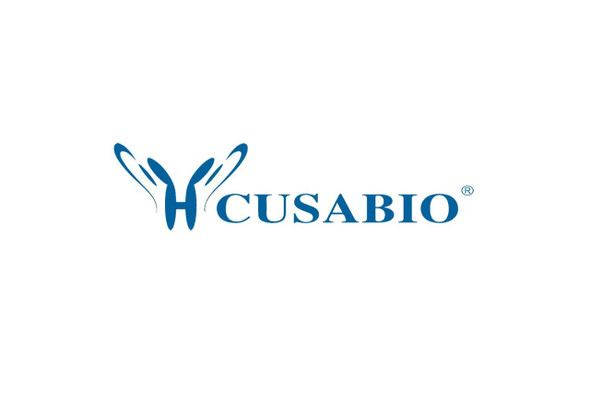Cusabio Human Recombinants
Recombinant Human Nuclear receptor ROR-gamma (RORC) | CSB-EP020071HU
- SKU:
- CSB-EP020071HU
- Availability:
- 3 - 7 Working Days
Description
Recombinant Human Nuclear receptor ROR-gamma (RORC) | CSB-EP020071HU | Cusabio
Alternative Name(s): Nuclear receptor RZR-gammaNuclear receptor subfamily 1 group F member 3RAR-related orphan receptor CRetinoid-related orphan receptor-gamma
Gene Names: RORC
Research Areas: Transcription
Organism: Homo sapiens (Human)
AA Sequence: MDRAPQRQHRASRELLAAKKTHTSQIEVIPCKICGDKSSGIHYGVITCEGCKGFFRRSQRCNAAYSCTRQQNCPIDRTSRNRCQHCRLQKCLALGMSRDAVKFGRMSKKQRDSLHAEVQKQLQQRQQQQQEPVVKTPPAGAQGADTLTYTLGLPDGQLPLGSSPDLPEASACPPGLLKASGSGPSYSNNLAKAGLNGASCHLEYSPERGKAEGRESFYSTGSQLTPDRCGLRFEEHRHPGLGELGQGPDSYGSPSFRSTPEAPYASLTEIEHLVQSVCKSYRETCQLRLEDLLRQRSNIFSREEVTGYQRKSMWEMWERCAHHLTEAIQYVVEFAKRLSGFMELCQNDQIVLLKAGAMEVVLVRMCRAYNADNRTVFFEGKYGGMELFRALGCSELISSIFDFSHSLSALHFSEDEIALYTALVLINAHRPGLQEKRKVEQLQYNLELAFHHHLCKTHRQSILAKLPPKGKLRSLCSQHVERLQIFQHLHPIVVQAAFPPLYKELFSTETESPVGLSK
Source: E.coli
Tag Info: N-terminal 6xHis-SUMO-tagged
Expression Region: 1-518aa
Sequence Info: Full Length
MW: 74.2 kDa
Purity: Greater than 90% as determined by SDS-PAGE.
Relevance: Nuclear receptor that binds DNA as a monomer to ROR response elents (RORE) containing a single core motif half-site 5'-AGGTCA-3' preceded by a short A-T-rich sequence. Key regulator of cellular differentiation, immunity, peripheral circadian rhythm as well as lipid, steroid, xenobiotics and glucose metabolism. Considered to have intrinsic transcriptional activity, have some natural ligands like oxysterols that act as agonists (25-hydroxycholesterol) or inverse agonists (7-oxygenated sterols), enhancing or repressing the transcriptional activity, respectively. Recruits distinct combinations of cofactors to target gene regulatory regions to modulate their transcriptional expression, depending on the tissue, time and promoter contexts. Regulates the circadian expression of clock genes such as CRY1, ARNTL/BMAL1 and NR1D1 in peripheral tissues and in a tissue-selective manner. Competes with NR1D1 for binding to their shared DNA response elent on some clock genes such as ARNTL/BMAL1, CRY1 and NR1D1 itself, resulting in NR1D1-mediated repression or RORC-mediated activation of the expression, leading to the circadian pattern of clock genes expression. Therefore influences the period length and stability of the clock. Involved in the regulation of the rhythmic expression of genes involved in glucose and lipid metabolism, including PLIN2 and AVPR1A. Negative regulator of adipocyte differentiation through the regulation of early phase genes expression, such as MMP3. Controls adipogenesis as well as adipocyte size and modulates insulin sensitivity in obesity. In liver, has specific and redundant functions with RORA as positive or negative modulator of expression of genes encoding phase I and Phase II proteins involved in the metabolism of lipids, steroids and xenobiotics, such as SULT1E1. Also plays also a role in the regulation of hepatocyte glucose metabolism through the regulation of G6PC and PCK1. Regulates the rhythmic expression of PROX1 and promotes its nuclear localization .
Reference: The DNA sequence and biological annotation of human chromosome 1.Gregory S.G., Barlow K.F., McLay K.E., Kaul R., Swarbreck D., Dunham A., Scott C.E., Howe K.L., Woodfine K., Spencer C.C.A., Jones M.C., Gillson C., Searle S., Zhou Y., Kokocinski F., McDonald L., Evans R., Phillips K. , Atkinson A., Cooper R., Jones C., Hall R.E., Andrews T.D., Lloyd C., Ainscough R., Almeida J.P., Ambrose K.D., Anderson F., Andrew R.W., Ashwell R.I.S., Aubin K., Babbage A.K., Bagguley C.L., Bailey J., Beasley H., Bethel G., Bird C.P., Bray-Allen S., Brown J.Y., Brown A.J., Buckley D., Burton J., Bye J., Carder C., Chapman J.C., Clark S.Y., Clarke G., Clee C., Cobley V., Collier R.E., Corby N., Coville G.J., Davies J., Deadman R., Dunn M., Earthrowl M., Ellington A.G., Errington H., Frankish A., Frankland J., French L., Garner P., Garnett J., Gay L., Ghori M.R.J., Gibson R., Gilby L.M., Gillett W., Glithero R.J., Grafham D.V., Griffiths C., Griffiths-Jones S., Grocock R., Hammond S., Harrison E.S.I., Hart E., Haugen E., Heath P.D., Holmes S., Holt K., Howden P.J., Hunt A.R., Hunt S.E., Hunter G., Isherwood J., James R., Johnson C., Johnson D., Joy A., Kay M., Kershaw J.K., Kibukawa M., Kimberley A.M., King A., Knights A.J., Lad H., Laird G., Lawlor S., Leongamornlert D.A., Lloyd D.M., Loveland J., Lovell J., Lush M.J., Lyne R., Martin S., Mashreghi-Mohammadi M., Matthews L., Matthews N.S.W., McLaren S., Milne S., Mistry S., Moore M.J.F., Nickerson T., O'Dell C.N., Oliver K., Palmeiri A., Palmer S.A., Parker A., Patel D., Pearce A.V., Peck A.I., Pelan S., Phelps K., Phillimore B.J., Plumb R., Rajan J., Raymond C., Rouse G., Saenphimmachak C., Sehra H.K., Sheridan E., Shownkeen R., Sims S., Skuce C.D., Smith M., Steward C., Subramanian S., Sycamore N., Tracey A., Tromans A., Van Helmond Z., Wall M., Wallis J.M., White S., Whitehead S.L., Wilkinson J.E., Willey D.L., Williams H., Wilming L., Wray P.W., Wu Z., Coulson A., Vaudin M., Sulston J.E., Durbin R.M., Hubbard T., Wooster R., Dunham I., Carter N.P., McVean G., Ross M.T., Harrow J., Olson M.V., Beck S., Rogers J., Bentley D.R.Nature 441:315-321(2006)
Storage: The shelf life is related to many factors, storage state, buffer ingredients, storage temperature and the stability of the protein itself. Generally, the shelf life of liquid form is 6 months at -20?/-80?. The shelf life of lyophilized form is 12 months at -20?/-80?.
Notes: Repeated freezing and thawing is not recommended. Store working aliquots at 4? for up to one week.
Function: Nuclear receptor that binds DNA as a monomer to ROR response elements (RORE) containing a single core motif half-site 5'-AGGTCA-3' preceded by a short A-T-rich sequence. Key regulator of cellular differentiation, immunity, peripheral circadian rhythm as well as lipid, steroid, xenobiotics and glucose metabolism
Involvement in disease: Immunodeficiency 42 (IMD42)
Subcellular Location: Nucleus
Protein Families: Nuclear hormone receptor family, NR1 subfamily
Tissue Specificity: Isoform 1 is widely expressed in many tissues, including liver and adipose, and highly expressed in skeletal muscle. Isoform 2 is primarily expressed in immature thymocytes.
Paythway: Th17celldifferentiation
Form: Liquid or Lyophilized powder
Buffer: If the delivery form is liquid, the default storage buffer is Tris/PBS-based buffer, 5%-50% glycerol. If the delivery form is lyophilized powder, the buffer before lyophilization is Tris/PBS-based buffer, 6% Trehalose, pH 8.0.
Reconstitution: We recommend that this vial be briefly centrifuged prior to opening to bring the contents to the bottom. Please reconstitute protein in deionized sterile water to a concentration of 0.1-1.0 mg/mL.We recommend to add 5-50% of glycerol (final concentration) and aliquot for long-term storage at -20?/-80?. Our default final concentration of glycerol is 50%. Customers could use it as reference.
Uniprot ID: P51449
HGNC Database Link: HGNC
UniGene Database Link: UniGene
KEGG Database Link: KEGG
STRING Database Link: STRING
OMIM Database Link: OMIM









